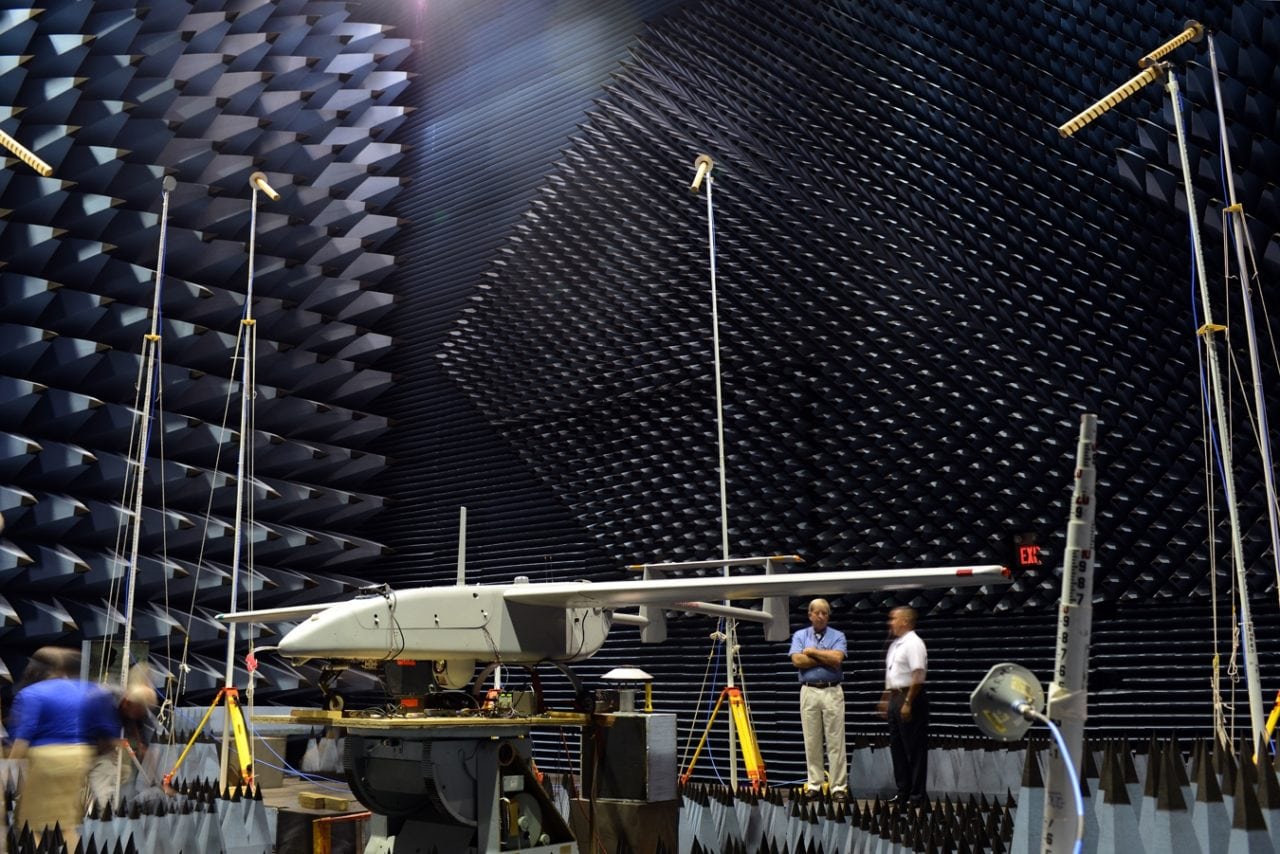 |
|
The Navy’s Communications and GPS Navigation
Program Office (PMW/A 170) mounted a Small
Antenna System on an Aerostar UAV then placed
it in a room lined with signal-absorbent
material, where it was subjected to GPS jamming
signals at Naval Air Station Patuxent River, Md.
Part of an initiative to protect GPS technologies on
small UAV, the Navy conducted the tests in July to
demonstrate how miniaturized GPS protection
devices can prevent interruption of the mission-
critical global positioning data. (U.S. Navy photo)
|
As part of an initiative to protect GPS technologies on small UAVs, the Navy recently conducted tests to demonstrate how miniaturized GPS protection devices can prevent interruption of this mission-critical global positioning data.
From July 10 to 24, the Communications and GPS Navigation Program Office (PMW/A 170), in San Diego, mounted a Small Antenna System (SAS) on an Aerostar unmanned aircraft, then placed the small UAV in a room lined with signal-absorbent material at the Facilities for Antenna and RCS Measurements (FARM), where it was subjected to GPS jamming signals.
Equipped with model jammers, the FARM facility was used as a stage for the “enemy” to jam the GPS signal and try to knock the UAV off course, said Eric Stevens, the Unmanned Aircraft Systems Communications and Navigation lead for PMW/A-170, which supplied the antenna system. Knocked off course, the UAV would not be able to relay critical intelligence back to the ground control station — disrupting communications among U.S. and allied forces’ ships, aircraft and submarines. In a worst-case scenario, GPS jamming could even cause UAVs to crash.
“If an enemy is trying to jam, or interfere, with the GPS frequency, this antenna allows us to be able to track and acquire the true GPS satellites even in the midst of this jamming and interference,” Stevens said. “What we are doing is demonstrating and quantifying the value of this antenna on small UAVs.”
PMW/A-170, aligned under the Naval Air Systems Command (NAVAIR) at Naval Air Station Patuxent River, Md., and the Space and Naval Warfare Systems Command in San Diego partnered with Naval Test Wing Atlantic, which supplied the Aerostar, to conduct July’s testing.
Equipped with the SAS, the Aerostar will be also used to support a U.S. Army pre-deployment war-game scenario conducted at Fort Polk, La., in August, said Donn Rushing, the project lead for MUDO. Rushing participated in the Fort Polk exercises last year and said the addition of the GPS anti-jamming antenna will give the “good guys” an edge this year.